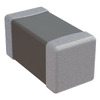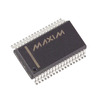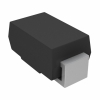Velocity Made Simple: Definitions, Units, Formulas, and Everyday Applications
Understanding how things move helps you see the world in a whole new way. Whether it's a car speeding down the road, a ball flying through the air, or a satellite circling the Earth, the concept of velocity explains how fast something is going and in which direction. Unlike speed, which only tells you how fast, velocity gives you the full story by adding direction into the mix. This simple difference makes velocity a key idea in learning about motion. You’ll discover how to calculate it, what affects it, and the different forms it can take. From walking to orbiting, velocity shows up everywhere around you. This guide makes it easy to understand how motion works, step by step.Catalog

Figure 1. Representation of Velocity
How Velocity Is Defined in Physics
In our everyday world, an object can either be at rest or in motion. When something is moving, we often want to know how fast it’s going. That’s where speed comes in. Speed simply tells us how much distance an object covers in a certain amount of time. For example, if you walk 1 meter in 1 second, your speed is 1 meter per second (1 m/s). It’s a straightforward number, but it only gives you part of the picture. Speed doesn’t tell you anything about which direction you’re heading—north, south, or maybe in circles. That’s because speed is what we call a scalar quantity—it has only magnitude, not direction.
But when we want to talk more completely about motion, we need to know both how fast something is moving and where it’s going. That’s where velocity comes into play. Velocity is like speed’s upgraded version—it includes direction. So, while speed tells you that a car is moving at 60 km/h, velocity tells you it’s moving at 60 km/h to the east. In simple terms, velocity equals speed with direction. Just like speed is defined as distance divided by time, velocity is defined as displacement divided by time. Displacement means the change in position, not just how much ground is covered.

Figure 2. Definition of Velocity
When you understand that, you’ll start to see why velocity gives a much clearer idea of motion. It helps explain differences that speed alone can’t show. For example, two people might be running at the same speed, but if one is going north and the other is going south, they have very different velocities.
Velocity is the displacement of an object divided by the time it takes, in a specific direction. That means if you move from one place to another, how far you’ve moved in a straight line from your starting point—and how long it took—gives you your velocity. If you and someone else are walking at the same speed but in opposite directions, your velocities will be different because direction matters.
Two objects only have the same velocity if they’re moving at the same speed and in the same direction. It’s not enough just to be moving equally fast—direction makes all the difference.
Symbol Used to Represent Velocity
In physics, symbols are used to make equations and explanations clear and easy to follow. Writing out full terms like “velocity” again and again can be time-consuming, especially when solving problems or working through formulas. That’s why we use simple symbols to represent physical quantities.
The symbol most often used for velocity is a lowercase “v”. This symbol helps express the concept quickly and efficiently in calculations. Since velocity is a vector quantity, which means it includes both speed and direction, it’s usually written in bold or with a small arrow above it, like →v. These notations remind you that velocity isn't just a number—it also points in a specific direction.
In some cases, you might see v(t) used in equations. This means the velocity at a specific time ‘t’, which is helpful when an object’s speed or direction changes over time. It’s a compact way to show that velocity can vary during motion.

Figure 3. Velocity Symbol
Now that you understand how we represent velocity using symbols, the next step is to look at how to calculate velocity using its formula.
Methods to Calculate Velocity

Figure 4. Velocity Fomula
To figure out how fast something is moving and in which direction, we use a simple and clear formula for velocity. Velocity is defined as displacement divided by time. Displacement refers to the straight-line distance between the starting point and the ending point, including the direction. So if you move 10 meters to the east in 2 seconds, your velocity is 5 meters per second to the east.
v = d / t
In this formula, v stands for velocity, d is the displacement, and t is the time taken. Both v and d are vector quantities, which means they have direction as well as magnitude. On the other hand, time (t) is a scalar quantity, which means it only has magnitude. So when you calculate velocity, direction plays a key part in the result.
Sometimes, you may want to know the average velocity over a journey. This happens when the object’s motion isn’t steady, or it changes direction. To calculate this, we use the total displacement and divide it by the total time taken.
𝑣̅ = (d₂ - d₁) / (t₂ - t₁)
In this formula, d₁ and d₂ are the starting and ending positions, and t₁ and t₂ are the starting and ending times. This helps you find the average velocity between two points, regardless of whether the object sped up, slowed down, or changed direction.
Using these formulas, you can better understand how fast something is moving and in which direction, whether it's a car on a highway, a ball flying through the air, or a person walking from one place to another.
Standard Unit of Velocity in SI System
Velocity is measured using the same basic formula:
Velocity = Displacement / Time
In this formula, displacement is measured in meters (m) and time in seconds (s) according to the SI (International System of Units). When we divide meters by seconds, we get the standard unit for velocity:
Velocity = meter / second
This unit, written as m/s or sometimes as ms⁻¹, tells you how far an object moves in one second in a given direction. For example, if a car travels 20 meters in 4 seconds, its velocity is 5 m/s. This simple unit is widely used in physics and science because it gives a clear, direct understanding of motion.
Although m/s is the official SI unit, other units are also used in everyday situations. You may often hear velocity expressed in feet per second (ft/s), kilometers per hour (km/h), or miles per hour (mph). These units are especially common in fields like transportation and sports.

Figure 5. Standard Unit of Velocity
For instance, in cricket, the speed of a bowled ball is usually shown in km/h or mph, not m/s. This is because those units are more familiar to players and viewers. No matter which unit is used, the idea behind velocity stays the same—it’s about how fast something is moving and in which direction.
Dimensional Formula of Velocity

Figure 6. Dimensional Formula of Velocity
To understand how velocity fits into the bigger picture of physical quantities, we use what's called a dimensional formula. This simply shows how a quantity like velocity is made up in terms of more basic physical dimensions, like length and time. It helps in checking equations and understanding how different quantities relate to each other.
Start with displacement, which is measured in meters (m). This unit tells us how far something has moved and represents the dimension of length, which is written as L. Now think about time, which is measured in seconds (s). The dimension of time is written as T.
Since velocity is displacement divided by time, we combine these two ideas:
Velocity = [L / T]
v = [L T⁻¹]
This tells you that velocity has one dimension of length and negative one dimension of time, meaning it depends on how far something travels and how quickly it does so. You’ll often see this written as [L T⁻¹].
Understanding the dimensional formula of velocity is useful when you're checking the accuracy of equations in physics or converting between different physical quantities. It keeps everything consistent and makes sure all parts of an equation make sense together.
Different Terms Related to Velocity
Velocity isn’t just about speed—it also includes direction. That’s why we use terms like negative, zero, and positive velocity to describe motion more accurately. These help us understand how an object moves relative to a chosen reference point.
Negative Velocity
When something moves away from a reference point, its velocity is considered negative. This doesn’t mean the object is doing anything wrong—it just tells us that its direction of movement is opposite to what we’ve chosen as the positive direction.
For example, if you throw a ball straight upward, it’s moving away from the Earth’s center (our reference point). While it’s rising, it has a negative velocity. This negative sign simply indicates the direction—it doesn’t mean the ball is slowing down on its own, just that it’s heading opposite the reference direction.
Zero Velocity
Zero velocity means the object is not changing its position over time. Even though time is passing, there’s no movement. Imagine that same ball reaching its highest point in the air—right at that moment, it's not going up or down. It just pauses briefly, and at that instant, its velocity is zero.
Positive Velocity
Positive velocity is used when an object moves toward the reference point, or in the direction we define as positive. After the ball reaches its peak and begins to fall back down, it moves toward the Earth again. Now, it's moving in the positive direction, so we say it has positive velocity.

Figure 7. Positive, Negative, and Zero Velocity Graph
This visual makes it easier to see how velocity can change over time—when an object isn’t moving, when it moves away from the reference (negative), and when it returns toward the reference point (positive).
Introduction to Initial Velocity
When studying motion, it’s common to look at how the velocity of an object changes over time. Since this velocity doesn’t always stay the same, we often refer to specific points in time to better describe the motion. One of those key points is the initial velocity, which is simply the velocity of an object at the very beginning of the time you're observing it—usually taken at time t = 0.
In physics, initial velocity is represented by the letter “u” or sometimes “Vi” (short for initial velocity). It marks the starting speed and direction of the object. For example, imagine throwing a ball straight up into the air. The moment it leaves your hand, it's at its maximum initial velocity. As the ball moves upward, gravity slows it down. Then, at the peak, it stops briefly (zero velocity), and as it comes back down, velocity increases again—but in the opposite direction.
Now, let’s say you’re only observing the ball during its falling motion from the highest point downward. At that point, its initial velocity would be zero, because that’s where it starts to move again. So, the initial velocity always depends on when you start measuring.
Understanding initial velocity helps you figure out how an object will move, how long it will take to reach a certain point, or how far it will travel over time. And with the help of a few standard formulas, you can calculate it based on the available values.

Figure 8. Velocity of Ball Thrown in Upward Direction
Common Formulas for Initial Velocity
We can find the initial velocity using different equations, depending on the information we’re given. These are based on the equations of motion in physics.
v = u + at
If you know the final velocity, acceleration, and time, you can rearrange the equation to get:
u = v - at
When you’re given distance, final velocity, and acceleration, use:
u² = v² - 2aS
If you only know distance, time, and acceleration, the following formula works well:
u = S/t - (1/2)at
And when you’re given final velocity, time, and distance, you can use:
u = 2(S/t) - v
Here’s what each symbol stands for:
• u = initial velocity
• v = final velocity
• a = acceleration
• t = time consumed
• S = distance covered
These formulas help calculate the starting velocity in different motion situations. Just plug in the values you know, and you’ll be able to find how fast the object was moving when it started.
Understanding Final Velocity
Final velocity is the speed of an object at the very end of its motion. It tells you how fast something is moving right before it stops, hits something, or changes direction. For example, if you throw a ball and someone catches it after a few seconds, the speed it has at that moment—just before it's caught—is its final velocity. If you drop a ball from a height, the speed it has right before it hits the ground is also a final velocity.
Final velocity is written as v or Vf. It depends on how fast the object started moving (initial velocity), how much it sped up or slowed down (acceleration), and how long it was in motion or how far it traveled.
This helps you figure out how the motion ends, not just how it begins. Whether you’re dealing with a falling ball, a moving car, or a flying object, knowing the final velocity lets you understand the full picture of the movement.
Equations Used for Final Velocity
There are two main formulas to calculate final velocity. Which one you use depends on what information you’re given.
If you know the initial velocity, acceleration, and time, use:
Vf = Vi + at
This tells you the final speed after an object speeds up or slows down over a certain amount of time.
• Vf = final velocity
• Vi = initial velocity
• a = acceleration
• t = time
If time isn’t given, but you know the distance, initial velocity, and acceleration, use:
Vf² = Vi² + 2aS
This version helps when you know how far the object has moved instead of how long.
• Vf = final velocity
• Vi = initial velocity
• a = acceleration
• S = distance
These two formulas make it easy to calculate how fast an object is going at the end of its motion. Just choose the one that matches the details you have.
Exploring the Different Types of Velocity
Objects don’t always move in the same way. Depending on how something moves—whether it’s steady, changing speed, spinning, or falling—there are different types of velocity to describe that motion. Each type helps us understand what’s happening with the object’s speed and direction. Let’s explore them one by one.
Definition and Formula of Average Velocity
Average velocity is a simple way to understand how fast something moves over a certain distance in a specific direction. When an object is in motion, it might speed up, slow down, or even stop for a while. But if you want to know the overall motion from start to finish, average velocity gives you that. It’s like looking at the big picture instead of focusing on every small moment. This value shows how much the position of the object has changed and how long it took to do that.
You can think of it as the overall rate at which an object changes its position. It’s not about how fast it was moving every second—it’s about the total displacement and total time taken. That’s why it’s helpful when the motion is not constant or when the object has been speeding up and slowing down. Average velocity is commonly written as v or sometimes Vav.
v = (x₂ - x₁) / (t₂ - t₁)
Here:
• x₂ is the final displacement
• x₁ is the initial displacement
• t₂ is the ending time
• t₁ is the starting time
This formula helps when you know where the object started, where it ended, and how long it took to get there. Just subtract the starting position from the ending position, and divide it by the time difference. The result tells you the average rate of motion in a specific direction.
It’s important to remember that average velocity doesn’t tell you how fast or slow the object was moving at every point. It’s a general summary. To know the exact speed at a single moment, you would need to use instantaneous velocity, which we’ll look at next.
Instantaneous Velocity

Figure 9. Instantaneous Velocity
Instantaneous velocity is the exact speed and direction of an object at a single, specific moment. While average velocity gives you the overall picture of how an object moved over time, instantaneous velocity focuses on just one point in time. For example, if you're watching a car and want to know how fast it's going right now—not over the whole trip—then you're looking for its instantaneous velocity.
This concept is especially helpful when the object's motion isn’t constant. If something speeds up, slows down, or pauses during a journey, its instantaneous velocity can change from one second to the next. To find this type of velocity, you take the idea of average velocity and shrink the time gap smaller and smaller until it’s nearly zero. That way, you’re only looking at the motion during a very tiny time slice.
Instantaneous velocity is written as Vinst. When an object’s speed stays the same during the entire motion, the instantaneous and average velocities are equal, since there's no change happening at any point.
Vinst = lim (Δt → 0) (Δd / Δt)
This means you're finding the limit of the average velocity as the time difference gets closer and closer to zero. It’s like taking a snapshot of motion, showing the rate of change of position in just one moment.
To understand the difference between average and instantaneous velocity better, take a look at Jack’s journey shown in the next figure. In the first part, Jack walks 3 miles in 6 minutes. Then he stops for 9 minutes. After that, he continues and walks 5 miles in 15 minutes. If you calculate the total displacement and divide it by the total time, you get his average velocity. But if you check his speed right when he was walking—or right when he stopped—you’ll notice his instantaneous velocity was changing.
Constant Velocity
Constant velocity means that an object is moving in a straight line without changing its speed or direction. It keeps going at the same rate from start to finish. There’s no speeding up, slowing down, or turning—just smooth, steady motion. If you've ever watched a puck sliding across smooth ice, that’s a great example. It continues in the same direction at the same speed unless something stops it.
This type of motion can be explained using a basic formula. It shows how far the object has traveled from where it started, depending on how long it’s been moving:
x = x₀ + vt
In this equation:
• x₀ is the position where the object starts
• v is the constant velocity
• t is the time passed
• x is the position of the object at that time
This means the object's position changes evenly with time—no jumps or pauses. As time moves forward, the position increases in a straight line if the velocity is positive, or decreases if it's negative.
Constant velocity only happens when there are no unbalanced forces acting on the object. For example, when there’s very little or no friction, like on ice, objects can move freely and maintain the same speed. If there was more resistance, the object would eventually slow down, and the velocity would no longer be constant.
Also, when an object moves with constant velocity, it means the acceleration is zero. That’s because acceleration is just the rate of change of velocity—and here, nothing is changing.
a = dv/dt = 0
So, if the speed and direction remain the same, acceleration stays at zero, and the object just keeps going. This kind of motion is simple, but it forms the foundation for understanding more complex types of movement later on.
Variable Velocity
Variable velocity means that the speed or direction of a moving object is not staying the same. It keeps changing as time passes. This could mean the object is speeding up, slowing down, turning, or doing a mix of these. If either the amount of movement or the path it follows keeps changing, then the object is moving with variable velocity.
To put it simply, if something covers unequal distances in equal time intervals, it doesn't have a steady pace. Instead, its motion is changing, and so is its velocity. This kind of motion is common in everyday life—most objects don’t move in a perfectly straight path at a fixed speed.
A good example is a ceiling fan. It may spin at a steady rate, but its direction is always changing as it turns in a circle. Even if the speed of rotation stays the same, the fan’s velocity is not constant because velocity includes direction, not just how fast it’s moving.
Variable velocity is also seen when you're riding a bike through a winding road, speeding up downhill and slowing down uphill. In all these situations, you're not moving the same way the entire time—your motion is changing, so your velocity is changing too.
Understanding variable velocity helps explain most real-world motion, where steady, straight-line travel is rare. Whether it's cars turning, balls bouncing, or planets orbiting, their velocity keeps changing along the way.
Orbital Velocity

Figure 10. Orbital Velocity
back down. When an object moves at just the right speed, gravity pulls it inward while its forward motion keeps it moving along a curved path. This balance between gravity and motion creates orbit.
One of the most common examples is a satellite orbiting Earth. If the satellite moves too slowly, gravity pulls it down. If it moves too fast, it might escape Earth's pull. But when it moves at its orbital velocity, it stays in a steady path around the planet. The same concept applies to the moon, which orbits Earth, and planets like Earth that orbit the Sun.
This velocity depends on a few things: the mass of the planet or star the object is orbiting, and the distance from its center. The farther away an object is, the lower the orbital velocity needed to stay in orbit.
Vorbit = √(GMR)
Where:
• G is the gravitational constant
• M is the mass of the planet or central body
• R is the radius (distance from the center of the planet to the object)
Escape Velocity

Figure 11. Angular Velocity
Angular velocity is the rate at which an object rotates around a fixed point or axis. Instead of tracking how far something moves in a straight line, it tells you how fast the object turns, measured in terms of angle. It's useful when studying things that spin or rotate, like fans, wheels, or planets. The symbol used to represent angular velocity is omega (ω).
This type of motion focuses on angle change over time. So, even if something isn’t covering much ground in distance, it could still have a high angular velocity if it’s spinning quickly. A wheel turning in place is a perfect example of this.
In the International System (SI), the unit of angular velocity is radians per second (rad/s). But depending on the situation, it can also be measured in degrees per second, revolutions per minute (rpm), or degrees per hour—especially in mechanics or navigation.
To calculate angular velocity, you can use one of two main formulas:
ω = v / r
Where:
• ω = angular velocity
• v = linear velocity (how fast it's moving along the edge)
• r = radius (distance from the center of rotation)
You can also calculate angular velocity using the angle covered over time, especially when the total rotation is known.
ω = Δθ / Δt
Angular velocity becomes rotational velocity when measured in full turns—like revolutions per minute. The direction of angular velocity is always perpendicular to the plane of rotation, and we can use the right-hand rule to find it: curl your fingers in the direction of rotation, and your thumb will point in the direction of angular velocity.
This concept is especially helpful when dealing with rotating machinery, the Earth’s spin, or anything involving circular motion. It shows how fast something turns and helps us understand how angular motion connects to linear speed.
Angular Velocity
Angular velocity is how fast something spins or rotates around a point. It tells you how much angle it covers in a certain time.
ω = Δθ / Δt
You can also find it using speed and radius:
ω = v / r
Where:
• ω = angular velocity
• v = linear velocity
• r = radius
Linear Velocity
Linear velocity describes how fast an object moves along a straight path in a specific direction. The word “linear” means the motion follows a straight line, without turning or curving. So whenever something moves without changing direction—like a car on a straight road or a runner on a straight track—you’re observing linear velocity. It tells you how much distance the object covers and how quickly it covers it.
This velocity is represented by the letter v, and it depends on two things: the distance moved and the time taken. It gives a simple, clear way to describe motion.
v = S / t
Where:
• v = linear velocity
• S = distance or displacement
• t = time taken
Now, if the object is moving along a curved or circular path—like a wheel turning or a point on a rotating fan—its motion can still be described in terms of linear velocity at the edge of that rotation. In circular motion, the distance it travels around the circle is called the arc length, and it connects with the angle the object moves through and the radius of the circle.
S = rθ
Substitute that into the linear velocity formula:
v = rθ / t
And using angular velocity (ω), which is the rate of change of the angle:
v = rω
Where:
• r = radius
• ω = angular velocity
This relationship helps connect rotational motion to straight-line motion. When an object spins, each point on its edge moves in a straight line—even if the overall motion is circular.

Figure 12. Right-Hand Rule to Find Angular Direction
The figure above also shows the link between linear speed (v) and angular speed (ω). Using the right-hand rule, you can find the direction of angular velocity: if your fingers curl in the direction of rotation, your thumb points in the direction of the angular velocity vector.
Terminal Velocity
Terminal velocity is the maximum constant speed that an object reaches while falling through a fluid, such as air or water. When something drops from a height, it doesn’t keep speeding up forever. At first, gravity pulls it downward and increases its speed. But as the object moves faster, air resistance (or drag) pushes against it. Eventually, the upward drag force becomes equal to the downward force of gravity, and the object stops accelerating. At this point, it falls at a steady speed—this is its terminal velocity.
This speed is always vertical and is represented by vt in physics. It’s most commonly seen in skydiving. When a skydiver jumps from a plane, they speed up at first, but after a few seconds, they fall at a constant speed—that’s terminal velocity.
Several factors affect terminal velocity. These include the mass of the object, the drag coefficient (which depends on the shape and surface texture), the projected area (how much surface is hitting the air), and the density of the fluid the object is falling through. Heavier objects usually reach a higher terminal velocity, while objects with more surface area or higher drag reach a lower one.
vt = √(2mg / ρACd)
Where:
• vt = terminal velocity
• m = mass of the object
• g = gravitational acceleration (9.8 m/s²)
• ρ = fluid density
• A = projected area of the object
• Cd = drag coefficient
Understanding terminal velocity helps explain why objects fall differently depending on their shape, size, and weight. It’s also useful in designing parachutes, air-drop systems, and even sports equipment where controlling fall speed matters.
Uniform Velocity
Uniform velocity refers to motion where an object covers equal distances in equal time intervals while moving in a fixed direction. This means both the speed and the direction stay the same throughout the motion. There are no changes in how fast the object is going, and it doesn’t turn or shift its path.
This type of motion is very steady and predictable. A good example would be a motorbike moving at 20 kilometers per hour toward the east without speeding up, slowing down, or changing its path. If it keeps that same speed and direction, it's said to have uniform velocity.
Uniform velocity is different from just constant speed. Speed only tells you how fast something is moving, while velocity also includes direction. So for velocity to be uniform, both the speed and the direction must remain unchanged.
This motion can be clearly represented using a distance-time graph. When velocity is uniform, the graph is a straight line rising at a constant rate. That straight line means the object is moving the same amount of distance in each unit of time.

Figure 13. Uniform Velocity in a Distance-Time Graph
This type of motion is common in physics problems that assume no external forces, friction, or resistance—helping you focus purely on the relationship between distance and time.
Non-Uniform Velocity
Non-uniform velocity refers to motion where an object covers unequal distances in equal time intervals or changes its direction while moving. This means the object might be speeding up, slowing down, turning, or doing all of these at once. In contrast to uniform velocity, where everything stays the same, here the rate of motion varies, and the path may shift.
This type of motion is very common in everyday life. For example, a car moving through traffic, a runner turning corners on a track, or a person walking at different paces are all experiencing non-uniform velocity. In each of these cases, the speed isn’t steady or the direction changes, or both.
Non-uniform velocity can be clearly observed in a velocity-time graph, where the graph doesn’t form a straight line. Instead, it may rise and fall, showing how the velocity changes from one moment to the next.

Figure 14. Non Uniform Velocity on a Velocity-Time Graph
In this figure, you can see how the car’s velocity varies—it doesn’t stay at one level. These fluctuations show that the car is not covering the same amount of distance in each time interval. This is the key feature of non-uniform velocity, and it's what sets it apart from the more predictable pattern of uniform motion.
Relative Velocity
Relative velocity is the velocity of one object as seen from another. It shows how fast and in what direction one object is moving compared to another moving object or observer. Rather than just looking at motion from a fixed point, relative velocity helps you understand how things move from each other's point of view.
For example, if you’re sitting in a car moving at 60 km/h and another car beside you is moving at the same speed in the same direction, it looks like the other car isn’t moving at all—even though both are in motion. That’s because the relative velocity between the two cars is zero.
Now, let’s take a situation where external forces like wind or water are involved. Think of an airplane flying into a headwind or a boat moving across a river. To accurately understand how these objects move, we don’t just look at their speed—we must also consider the motion of the air or water around them. This is where relative velocity becomes important.
The general formula to calculate the relative velocity of object x with respect to object y is:
Vxy = Vx - Vy
Similarly, the relative velocity of object y with respect to x is:
Vyx = Vy - Vx
These two are related, and one can be written in terms of the other:
Vxy = -Vyx
This means both velocities are equal in magnitude but opposite in direction.
In a real-world case, imagine an observer moving to the right, while a girl throws a ball forward in the same direction. If you measure the ball’s velocity relative to the observer, it would seem slower than if viewed from a fixed point. If the girl throws the ball in the opposite direction of the observer's motion, the ball’s velocity relative to the observer becomes negative, meaning it's moving in the reverse direction from their point of view.
Understanding relative velocity helps explain many real-life scenarios in motion—whether it’s tracking aircraft, navigating in rivers, or analyzing objects from moving frames like cars or trains.
Key Differences Between Speed and Velocity
Many people mix up speed and velocity, and it’s easy to understand why—they both describe how fast something moves. But there’s a key difference that changes how they are used in physics and real-world applications. The confusion usually arises when people try to apply these concepts in situations where direction matters.
At the most basic level, speed is how fast something is moving, while velocity tells you both how fast and in which direction the object is moving. This makes speed a scalar quantity because it only needs magnitude, and velocity a vector quantity because it needs both magnitude and direction.
To break it down simply:
• Speed is the rate of change of distance over time. It shows how fast an object is moving regardless of direction.
• Velocity is the rate of change of displacement, which is the shortest path between two points, and it always includes a specific direction.
For example:
• A car moving at 30 kilometers per hour has a speed.
• A car moving at 30 kilometers per hour to the east has a velocity.
• Speed is always positive and cannot be negative or zero unless the object is completely at rest.
• Velocity can be positive, zero, or negative, depending on the direction of motion.
When calculating averages:
• Average speed = total distance / total time
• Average velocity = total displacement / total time
So while the numbers might sometimes seem similar, they’re not always the same—direction makes all the difference.
| Parameters | Speed | Velocity |
| Definition | The rate at which a body covers a particular distance is commonly known as speed. | The rate at which a body changes its position in a specific direction is called velocity. |
| Magnitude | Speed is always positive and it cannot be either negative or zero. | Velocity can be positive, zero, and negative depending upon the direction in which an object is moving. |
| Quantity Type | Speed does not need any direction for its description so, it is a scalar quantity. | Velocity cannot be described without direction so it is a vector quantity. |
| Change in Direction | Change in direction does not matter when calculating average speed. | Every change in direction changes the velocity. |
| Formula | s=distancetime=dt | s=change in positionchange in time=st |
| SI Units | Meter per second (m/s) | Meter per second (m/s) |
This table clearly compares their definitions, formulas, units, and how direction affects each, making the differences easy to understand at a glance.
Examples That Show Velocity
Velocity is all around you—it’s simply speed in a specific direction. Below are some everyday examples that clearly show how velocity works in real life.
Walking to School
If your school is west of your home and you walk there daily, you’re not just moving—you’re moving west. That direction makes it velocity, not just speed.
Cricket Ball Delivery
When a bowler throws the ball toward the batsman, it’s moving in a clear direction. That straight path means the ball has velocity.
Moon and Earth Movement
The moon orbiting Earth or Earth revolving around the sun are natural examples of velocity because the movement follows a specific orbital path.
Rotating Fan
A ceiling fan spinning clockwise or counterclockwise shows angular velocity—the blades rotate with direction around a center.
Train Between Cities
A train moving on tracks from one city to another follows a set direction, which makes its motion a clear example of velocity.
Orbiting Satellite
Satellites revolve around Earth in a consistent path. Their speed and direction form what we call orbital velocity.
Water from a Tap
Water flows out in one direction when you open a tap. That simple motion in a specific direction also shows velocity.
River Flow
A river moves with variable velocity, as both its speed and direction can change while still generally flowing downstream.
Running or Jogging
Any time you walk, run, or jog in a straight line, you’re moving with velocity, not just speed, because there’s a direction involved.
Conclusion
Velocity is more than just how fast something moves—it's about the direction too. By understanding velocity, you can better explain how objects move, whether in a straight line or around in circles. You’ve seen the difference between speed and velocity, how to calculate each, and why direction matters. From walking to flying through space, velocity plays a big role in all kinds of movement. Now you can recognize and describe motion in ways that are more accurate and meaningful. It’s a simple idea that opens up a deeper understanding of everyday life.
About us
ALLELCO LIMITED
Read more
Quick inquiry
Please send an inquiry, we will respond immediately.
Frequently Asked Questions [FAQ]
1. What is the difference between speed and velocity?
Speed only tells you how fast something is moving, while velocity tells you how fast and in which direction. That means two objects can have the same speed but different velocities if they're moving in different directions.
2. Can velocity be negative?
Yes, velocity can be negative if the object is moving in the opposite direction to the one you choose as positive. The negative sign just shows direction—it doesn’t mean the object is going slower.
3. What are the standard units for velocity?
In the International System of Units (SI), velocity is measured in meters per second (m/s). However, in everyday life, you might also see it in kilometers per hour (km/h) or miles per hour (mph), especially for cars or running.
4. Why does velocity matter in real life?
Velocity helps describe motion more completely. It's useful in everyday activities like driving, playing sports, or flying. Knowing the direction and speed together lets you understand and control motion better.
5. How is velocity different in circular motion?
In circular motion, even if the speed stays the same, the direction keeps changing, so the velocity changes too. This is why objects moving in circles often have variable velocity, even if they appear to move steadily.

What Is the ADM5180JP and How Does It Work
on May 9th

DAC7725NB 12-Bit Quad Voltage Output DAC: Features, Pinout, and Specification
on May 8th
Popular Posts
-

Understanding Power Supply Voltages in Electronics VCC, VDD, VEE, VSS, and GND
on June 13th 24118
-

USB-C Pinout and Features
on June 13th 21243
-

The Ultimate Guide to Wire Color Codes in Modern Electrical Systems
on January 1th 17424
-

TL494 Current-Mode PWM Controller IC
on January 1th 14714
-

Current Divider Circuits and Effective Use of the Divider Formula
on January 1th 13607
-

FET (Field Effect Transistor) Circuit Symbols
Field-Effect Transistors (FETs) are widely used in modern electronics and are found in everything from simple devices to complex digital systems. To work with these transistors effectively, it's helpful to understand the symbols that represent different types of FETs. These symbols do more than just show what the transistors look like—they also provide information about how each transistor works ...on January 1th 13396
-

Quality (Q) Factor: Equations and Applications
The quality factor, or 'Q', is important when checking how well inductors and resonators work in electronic systems that use radio frequencies (RF). 'Q' measures how well a circuit minimizes energy loss and impacts the range of frequencies the system can handle around its main frequency. In systems with inductors, capacitors, and tuned circuits, a higher 'Q' means the circuit focuses more on a spe...on January 1th 13362
-

Understanding and Building Op-Amp Based Peak Detectors
In the world of electronic circuit design, peak detectors are key tools for accurately analyzing and processing signal strengths. These circuits are designed to find and keep the highest signal amplitude, making sure the peak value is precisely captured and held as needed. Peak detectors are important in many fields, from improving audio quality in communication systems to aiding medical diagnoses...on June 13th 12473
-

LM741 Op-Amp: Features, Specifications, and Applications
The LM741 op-amp is a popular and flexible electronic component. This article goes over the pin layout, functions, specs, and different ways the LM741 can be used, while also comparing it to similar models like the LM358.Catalog1. What Is the LM741 Op-Amp?2. The LM741 Pin Configuration3. The LM741 Pin Functions4. Specifications of the LM7415. Features of LM7416. LM741 Circuit Applications7. LM741 ...on June 13th 11999
-

ST-LINK/V2: Pinout, Specifications, and Datasheet
This article takes you through the ST-LINK/V2, a well-regarded tool that amplifies connectivity and functionality. Key topics will cover its pinout configuration, delve into its 3D model, and spotlight specifications. Such understanding expands the horizons of STM microcontrollers in diverse applications. By grasping these interfaces and tools, you can transform embedded systems, opening doors to ...on January 1th 11559


















































